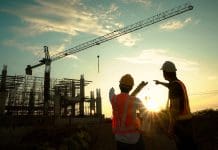Good design is paramount in planning, says Joe Ridgeon, director of Hedley Planning Services, and should be a key priority of the next Government
Today, we see more than ever the importance of good design in the planning process and its inclusion within national policy, which seeks to achieve well-designed places. Well thought out housing developments that eschew the norm can be inspiring places, making us feel safe, secure and at home. And this extends to the wider environment and infrastructure, which embraces all of us – from the fundamental layout of streets and pavements to the provision of useful local facilities and community services.
We have seen the recent vindication of adopting such an approach in the national recognition of Goldsmith Street, a highly energy-efficient council housing development in Norwich, which won the RIBA’s new housing award. Providing 100 homes for Norwich City Council, the project features cleverly designed houses and flats arranged in seven terrace blocks, to create a strong and sustainable new community.
In order to meet rigorous ‘Passivhaus’ environmental standards, every home has been carefully planned to seamlessly incorporate an array of sustainability measures, ranging from heat recovery mechanical ventilation systems and triple glazing to innovations like garden-wall letterboxes to reduce energy loss.
On the face of it, planning and developing schemes like Goldsmith Street can seem straightforward enough. But it’s surprising how easy it is to get this wrong. In balancing the demands of design and the planning process, I would argue that more thought needs to be given to the type of buildings and urban spaces that we want to create. More thought needs to be given to the people that will live in our houses, and how they will interact with space to create a home.
Property development questions
Those involved in property development need to be far more robust in answering some fundamentals if we are to deliver better housing schemes. “Who is this development for? Who will want to live here? And why will they want to come here?” At the start of the whole process, far more needs to be invested in thinking long and hard about what should be built and why?
Eye-catching design in planning can generate increased value throughout the development process, differentiating the ordinary from the extraordinary. It can also help to add value and higher returns on investment for developers and builders struggling in a capricious market. It doesn’t have to cost more as quality can be secured through thinking differently, or by adopting alternative approaches.
So, what constitutes good design within the planning process? It can start inside the home with efficient, well thought through spatial arrangements. Generous and effective utilisation of space is important. The health and wellbeing of home owners can be enriched by the internal environment, so flooding spaces with natural sunlight will contribute to well-being, while designing in good air quality and ventilation will also help (energy efficient build minimises the running costs, improves affordability and minimises carbon emissions). Thinking about how homes can be designed better to ensure they meet changing future needs is also paramount, creating homes that are hopefully more resilient to changing tastes, mores and the ravages of time. Similarly, good housing needs to incorporate design elements, which make properties more adaptable to warmer winters and wetter summers in the face of climate change.
Schemes that are getting the design/planning balance right feature a mix of factors but it’s also important to consider creating a ‘buzz’ about a place. Effective placemaking has to be in built from the outset – it can’t be ‘created’ once a scheme is completed – and must be considered as part of a wider community consultation process, contributing to occupants’ long-term happiness and security.
Developers can undoubtedly facilitate better design through improved engagement with the customer and wider communities but working collaboratively to test new technologies and techniques to improve build quality, while finding different ways of working, that involve a wider range of stakeholders and skills earlier on, also plays a part.
Government and by implication, local authorities, need to continually press to raise construction standards as they balance the demands of quality and long-term sustainability with speed and expediency of housing delivery within the planning system. I would also like to see more pursuance of diverse housing stock through the encouragement of alternative developers, including small builders and those involved in community and custom build projects.
Legacy of houses
It’s clear that we all need to think about the long-term legacy for those who will live in the houses we build if we are to deliver better homes. Improved engagement with the customer, whether the homes are for sale or rent, will help. We must not overlook the great strides that have been achieved in recent decades in good design as part of the planning process too.
Housing is unquestionably an extremely emotive issue and the call to build and build that echoes across the land will not be welcome by everyone. But it’s clear that more houses in the right places where people want to live, is paramount.
The planning process will continue to evolve in the face of revisions to national policy, but good design should remain front and centre when assessing the acceptability of development. Despite the uncertainty of a post-Brexit landscape, house building will be a busy sector and we want to encourage smaller builders to enter the market over the next few years – and it’s vital that effective and stable planning is in place to facilitate this.
It’s crystal clear that all involved in planning and development need to think hard about the long-term legacy for those who live in the houses we build. However, in the clamour to deliver the 300,000 new homes per year this country needs, the opportunity for design innovation, and thinking beyond today’s norm, must be at the forefront of peoples’ minds.
Joe Ridgeon
Director
LinkedIn: Hedley Planning













